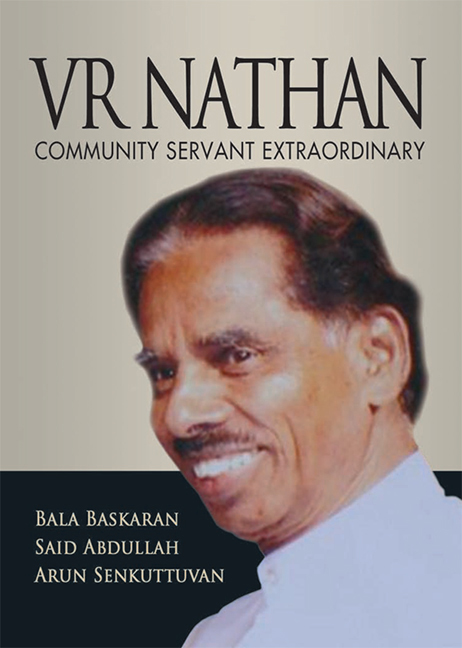Book contents
- Frontmatter
- Contents
- Foreword
- Message
- Preface
- Acknowledgements
- 1 VR's Inter-religious Leadership
- 2 An Immigrant who Made Good
- 3 Introduction to Temple Management Affairs
- 4 Invitation to Help out HEB
- 5 An Era of Change in HEB
- 6 VR's Signal Contribution to HEB's Transformation
- 7 Celebrating Hindu Festivals
- 8 Transforming the Temple Scene
- 9 VR's Views in Public Deliberations of Issues Affecting Indians
- 10 VR's Legacy
- Appendix
- About the Authors
- Plate section
7 - Celebrating Hindu Festivals
Published online by Cambridge University Press: 21 October 2015
- Frontmatter
- Contents
- Foreword
- Message
- Preface
- Acknowledgements
- 1 VR's Inter-religious Leadership
- 2 An Immigrant who Made Good
- 3 Introduction to Temple Management Affairs
- 4 Invitation to Help out HEB
- 5 An Era of Change in HEB
- 6 VR's Signal Contribution to HEB's Transformation
- 7 Celebrating Hindu Festivals
- 8 Transforming the Temple Scene
- 9 VR's Views in Public Deliberations of Issues Affecting Indians
- 10 VR's Legacy
- Appendix
- About the Authors
- Plate section
Summary
As seen in the earlier chapters, VR's first significant contribution to HEB was getting the accounts of its four temples and the board itself up to date and organized in such a way that temple clerks could continue to maintain them. He did not simply introduce the procedures and leave their supervision to the temple committee's finance member. He virtually became the chief accountant of HEB and spent all his evenings making sure that the cash, accounts and stocks tallied after every special prayer or festival and every month. His presence at some temple or other of HEB during office hours every day and often late into the night created a work culture at the board and its temples that meant no one handling money or stocks could escape being scrutinized.
In terms of procedures at temples, one of VR's important contributions was that collection from plates or trays extended by priests, thattukkasu, should be accounted for and shared among all temple workers and priests. Collection of money in this form is a recent phenomenon at Hindu temples. In the old days, people who built the temples or those who came in later to support them would have provided sufficient endowments to pay for their upkeep and the payment of salaries and benefits to priests and other employees. When income from endowments was not sufficient, well-off members of the congregation would provide the necessary funds through their committees without involving the priests in any way. In some temples, collection boxes (undial) would be installed but far away from the sanctums. The idea was the priest should not know who was placing how much into the collection box and that he should treat all worshippers, rich or poor, in the same manner.
Some time in the middle of the last century, some enterprising priests in India started adapting a practice of vicars of churches. In fact they improved on it. Vicars only passed around trays or bins through elders or altar boys at the end of the service. Hindu priests who were performing a ritual of deeparathanai (worship with light) by showing burning camphor on a conical-structured plate or a lighted oil lamp around the god-form in the sanctum sanctorum now put the camphor or the lamp on a wide flat plate and extended it to the devotees immediately after coming out of the sanctum.
- Type
- Chapter
- Information
- VR NathanCommunity Servant Extraordinary, pp. 59 - 83Publisher: ISEAS–Yusof Ishak InstitutePrint publication year: 2012

